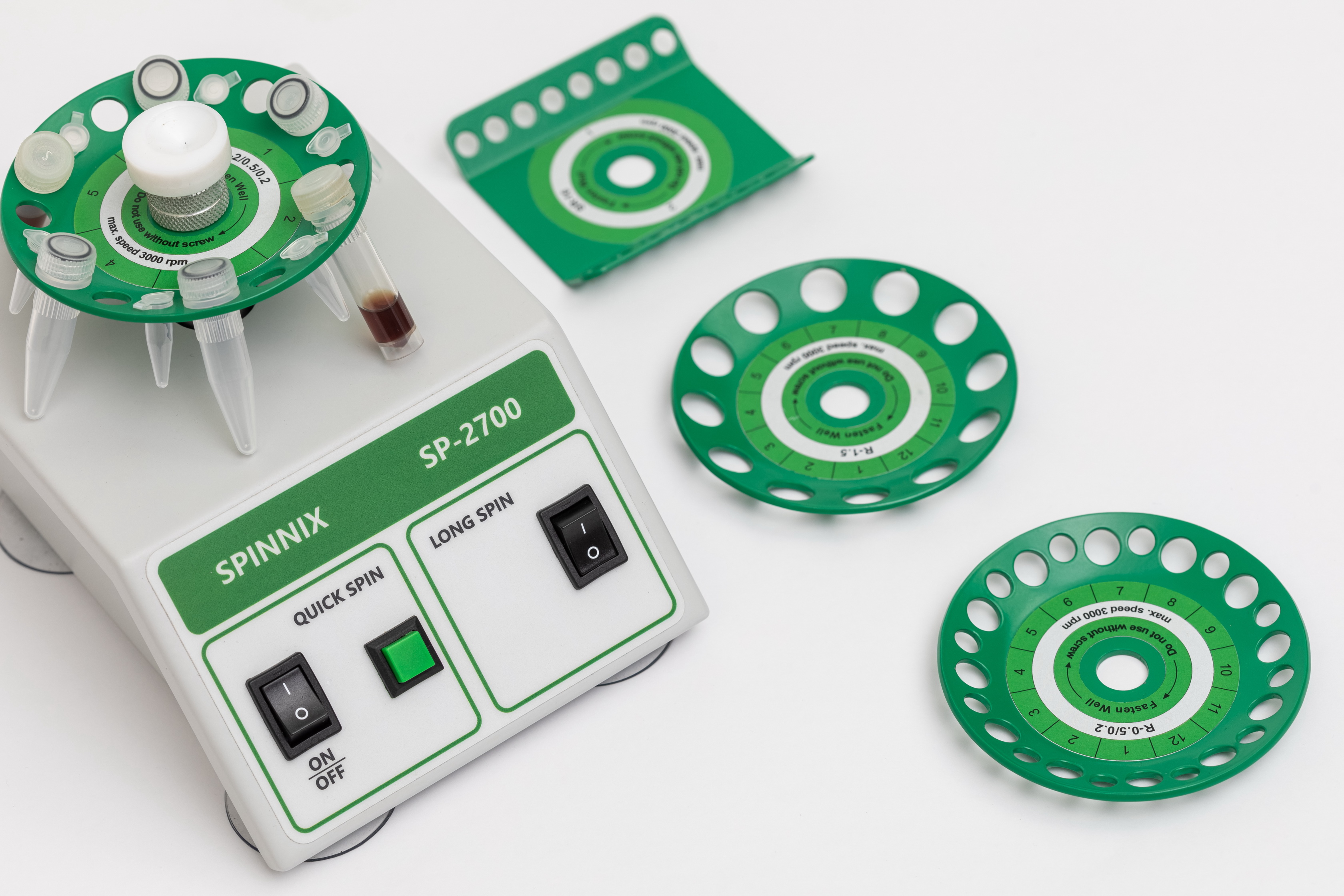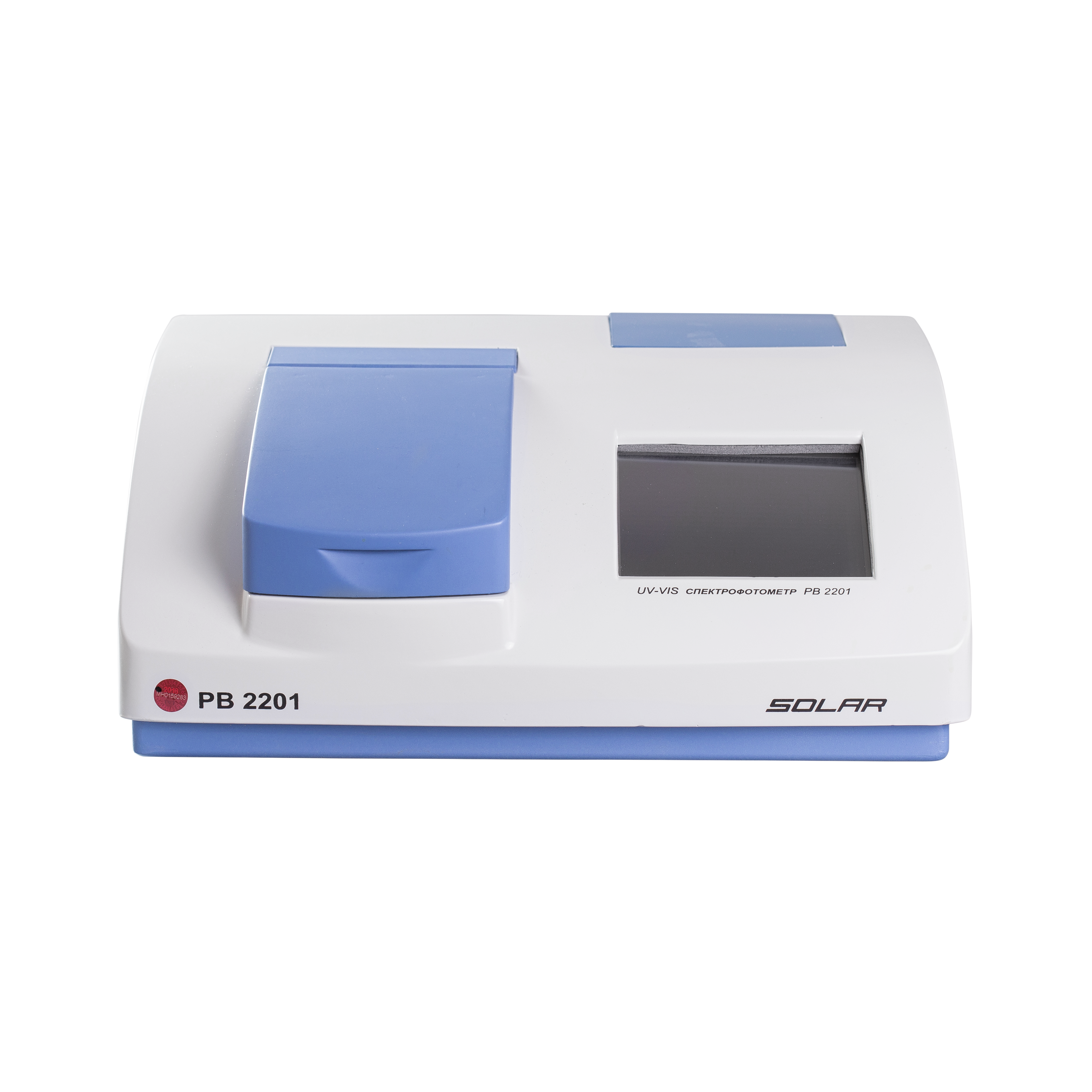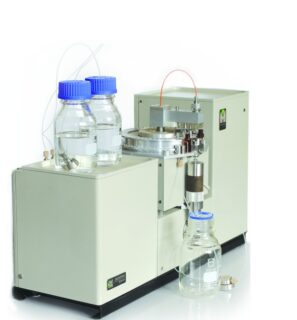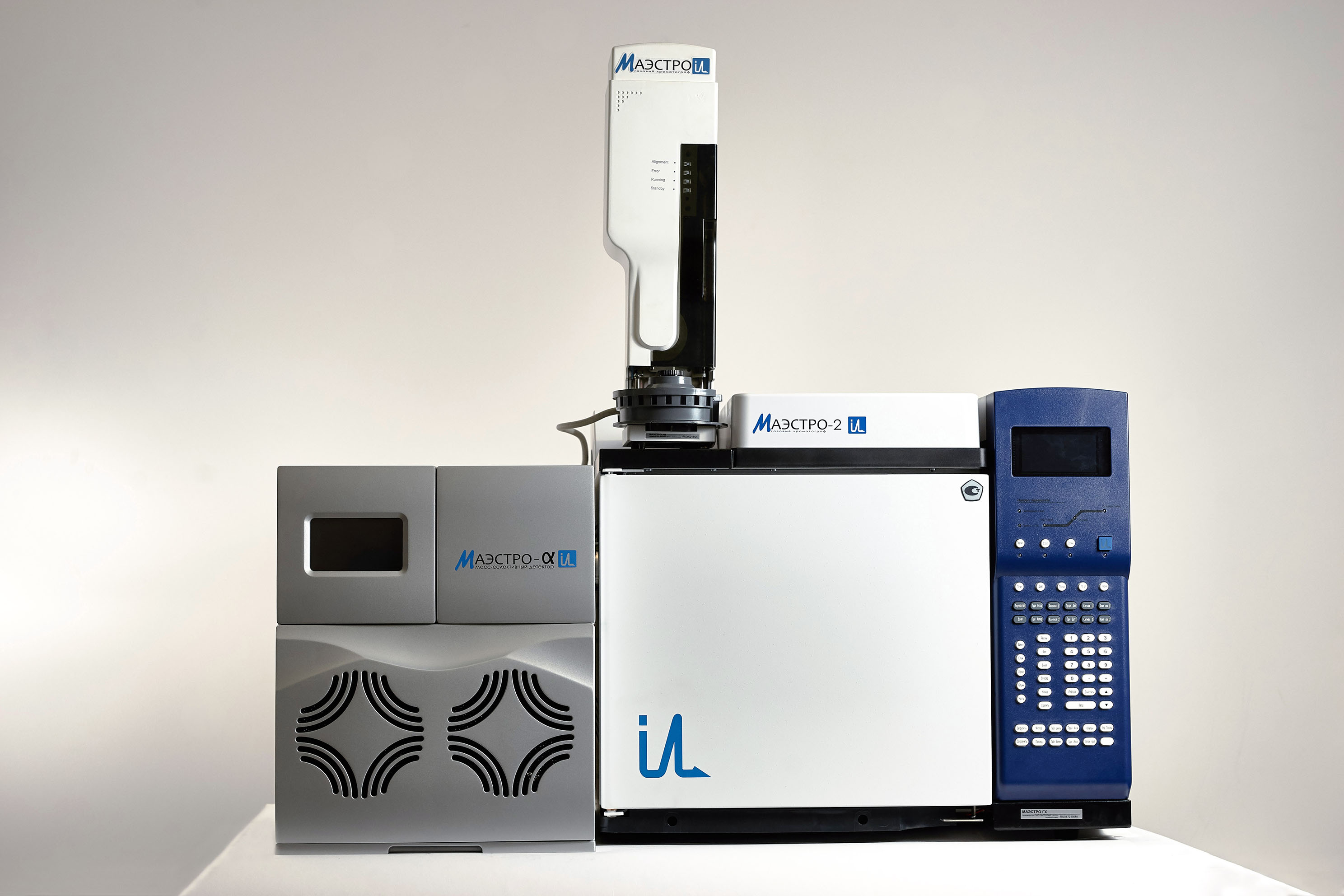NASHA LABA possibilities

Back to search results
MAESTRO-αMS gas chromatograph by Interlab
We offer expert laboratories of physicochemical methods of analysis a gas chromatograph with a quadrupole mass spectrometric detector «MAESTRO-αMS». Quadrupole GC-MS «MAESTRO-αMS» is in demand for targeted research (screening) and non-targeted search. In targeted studies, it is necessary to detect given target compounds in samples of various nature and origin at the level of residual amounts, for example, several picograms of the target compound in the injected 1 μl of liquid sample. Most often, targeted research is carried out in the following areas of laboratory screening: ecology, food safety, clinical monitoring, narcology, doping control, production control of various raw materials. In targeted studies, it is often required not only to confirm the presence of a compound in a sample, but also to determine the level of its content quantitatively, since both the list of target compounds and the permissible level of their presence in the sample are specified by regulatory documents. Quantitative analysis requires standards for the substances you are looking for. When conducting a non-target search, as a rule, it is required to analyze a sample of unknown composition, in other words, to find as many compounds as possible in the sample and identify (identify) each of them. Since the identification of a detected compound is carried out by comparing its experimental mass spectrum with the spectrum of a pure substance obtained under standard conditions, this task requires reference libraries of mass spectra of pure substances, as well as tools for working with mass spectra, for example: algorithms for cleaning experimental mass spectra from background and spectral noise (mass spectrum deconvolution algorithms), library search and comparison algorithms. An off-target search is called a qualitative analysis, since the researcher is primarily interested in the list of detected substances, and not in the quantitative assessment of their content in the sample. When creating MAESTRO-αMS, we took into account our own many years of experience in operating imported analogues. We have made the device inexpensive. We have made the device compact: The modern design of the device made it possible to make the MAESTRO-αMS really compact, so that the device occupies the smallest possible area on the laboratory table. The layout of the device allows you to remove the ion source on the front flange for cleaning and replacing the cathodes, if necessary. We have reduced the cost of operation: When developing the MAESTRO-αMS, we sought to increase the resistance of the device to sample matrices and use a minimum of consumable materials in order to eliminate downtime for maintenance and replacement. As a result, we have created an extremely stable ion source and a perpetual photomultiplier detector. We have created special software: Even at the first acquaintance with the software, it becomes obvious that being in the window of each button and each parameter to be changed is expedient and logical. Our software product was created for the convenience of the operator, so we implemented the necessary and eliminated the unnecessary. We used the principle of one active window, in which the operator moves sequentially step by step, performing hardware settings, setting the data collection method, subsequent processing algorithms, templates for presenting the results. MAESTRO-αMS offers a wide range of scanning modes, built-in algorithms for working with mass spectral data, convenient unloading of initial data arrays for their processing in specialized software packages, graphics export for presentations and scientific publications. You can use several libraries of mass spectra at the same time, or create your own for your typical tasks. Finally, we provide a 5-day training course for professionals who want to understand the theoretical foundations of the method and their implementation in the hardware of modern quadrupole GC/MS. The volume and depth of presentation of the material from the developers of the device is intended to lay the foundation for the effective use of «MAESTRO-αMS» in the future. Some technical characteristics of MAESTRO-αMS: • Instrumental detection limit (SIM, OFN @272 m/z ) < 10 fg; • Scan modes: scan for selected ions, full scan in a given mass range, combined scan mode; • The number of simultaneously connected libraries of mass spectra is at least 10.
May be interested in

Spectrophotometer UV-VIS PB2201
from 1 000 000 ₽
Measuring functions
Measurement of absorption, transmission, and reflection spectra
Measurement of optical density, transmission coefficient and reflection coefficient at fixed wavelengths
Determination of concentration at one, two, three wavelengths by factor, standard, schedule
Multi-wave kinetic measurements
Determination of concentration by programmed methods
Calculation of color and chromaticity coordinates
UVI spectrophotometers "SOLAR" operate in the ultraviolet, visible and near infrared regions of the spectrum. They are used in scientific laboratories, healthcare institutions, veterinary medicine, pharmaceuticals, ecology, biology, etc., in laboratories for quality control of products and raw materials in various sectors of the economy (industrial enterprises, agriculture, food industry, etc.)
Removable cuvette holders and set-top boxes
Accurate measurements
Cost-effectiveness
Touch screen
Built-in printer
Software support
SOLAR
Minsk
Produced in: Belarus, Minsk

Chromatograph Milichrome A-02
Overall dimensions: 550x230x350 mm
Weight (without computer): ~17 kg
Power consumption: up to 200 watts
Warranty service : 1 year
Detector
Two-beam spectrophotometer
Spectral range – 190-360 nm
Simultaneous detection at 1-8 wavelengths
Cell volume – 1.2 µl
Noise <0.0001 E.O.P. at 250 nm
Drift <0.00005 E.O.P./hour at 250 nm
Column
Ø2x75 mm stainless steel
The efficiency of the column is up to 6000 theoretical plates
Thermostat
Solid-state electric
Set temperature from 35 to 90°C
The discreteness of the temperature setting is 1 °C
Temperature control error ±0.3°C
Pump
Two-pronged, gradient
The feed rate is from 5 to 1000 µl/min, the
maximum pressure is 70 atm
. The gradient is formed from 1 to 20 linear sections
Automatic doser
Automatic, programmable
Number of test tubes – 46
The number of analyses in the series is from 1 to 200
The dosed volume is from 1 to 99 µl
Test tubes made of glass with a volume of 200 µl
Polyethylene tube stoppers
Software
OS: Windows® XP/7/10
Milichrome A-02™, Multichrome™, Alphachrome, Alphaspectrum
EkoNova
Novosibirsk
Produced in: Novosibirsk
